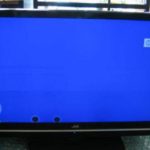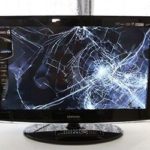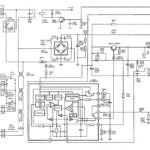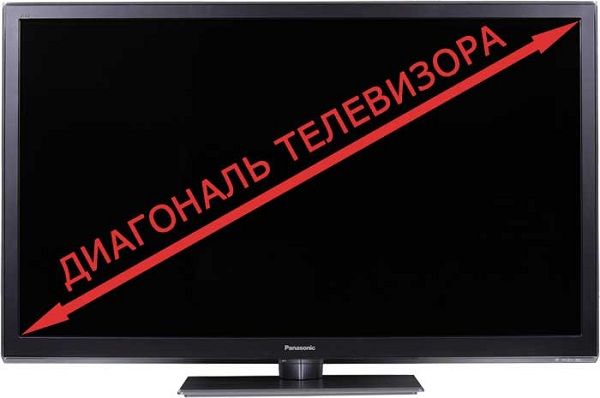The TV screen went dark
Once upon a time, televisions were characterized by unstable operation and a limited service life. But time passes, and with the invention of new technologies, LCD TVs are becoming more resistant to unsuitable conditions and more durable. But even new devices with a warranty can have problems. One of the most common among them is screen darkening.

The content of the article
What to do if the TV screen goes dark
If the image on the TV becomes unusually dark or disappears altogether, then most likely there is a problem with the monitor and its components. First of all, you need to find the cause of the malfunction and find out which part is damaged. To do this, pay attention to the condition of the device.
Why does the TV screen go dark - possible reasons
With the same symptom, the reasons for incorrect color display on the TV may be different, one or several at once. Identifying them is not easy, but it is possible if you are careful and follow the instructions outlined here to solve the problem.
power unit
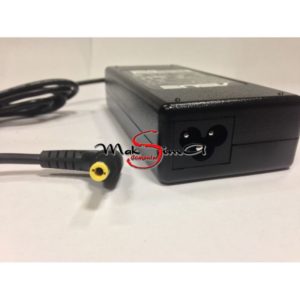 This is one of the most important parts for a TV, and its failure can lead to larger problems than a darkening screen. Before checking this part from the TV, you need to turn it off completely and remove the plug from the outlet. Only after this can you begin to inspect the power supply.If, at first glance at the diagram with contacts, black scorched areas or burnt holes catch your eye, this means that the cause of the problem lies precisely in the power supply, and you need to contact a specialist for help. The same result is indicated by swollen barrels of capacitors (if the top is flat, then everything is fine). In some cases, only a small section of the board will need to be replaced, but most often the entire circuit will need to be replaced.
This is one of the most important parts for a TV, and its failure can lead to larger problems than a darkening screen. Before checking this part from the TV, you need to turn it off completely and remove the plug from the outlet. Only after this can you begin to inspect the power supply.If, at first glance at the diagram with contacts, black scorched areas or burnt holes catch your eye, this means that the cause of the problem lies precisely in the power supply, and you need to contact a specialist for help. The same result is indicated by swollen barrels of capacitors (if the top is flat, then everything is fine). In some cases, only a small section of the board will need to be replaced, but most often the entire circuit will need to be replaced.
Video amplifier
Analyzing damage to this part is much easier: just go to the TV picture settings and try to change the brightness. If the lighting does not change even when changing brightness points opposite to each other, it means that the video amplifier has become unusable. In this case, a part from the amplifier must be replaced, rarely the entire one.
Matrix backlight
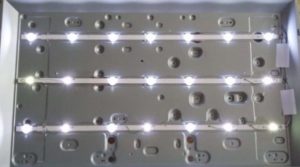 The matrix is something like a connecting substance between the outer glass and the screen itself in an LCD TV or monitor. A lot depends on it - the strength of radiation emanating from the screen, the clarity of textures, sharpness, tilt angle, etc. You can check its condition by pointing a flashlight at the TV screen when it is on. If the image appears in the highlighted area in the form in which the viewer expects to see it, then yes, the problem is in the matrix. You shouldn’t tinker with it yourself; it’s better to contact a specialist.
The matrix is something like a connecting substance between the outer glass and the screen itself in an LCD TV or monitor. A lot depends on it - the strength of radiation emanating from the screen, the clarity of textures, sharpness, tilt angle, etc. You can check its condition by pointing a flashlight at the TV screen when it is on. If the image appears in the highlighted area in the form in which the viewer expects to see it, then yes, the problem is in the matrix. You shouldn’t tinker with it yourself; it’s better to contact a specialist.
T-con
 T-con is the link between the matrix and the monitor, this board is responsible for the accuracy of information transmission, and it can be blamed for any minor or major distortions of the picture. Some TVs provide the user with the opportunity to check the serviceability of this part by displaying an image on the screen, which, if distorted, can reveal a breakdown of the board.
T-con is the link between the matrix and the monitor, this board is responsible for the accuracy of information transmission, and it can be blamed for any minor or major distortions of the picture. Some TVs provide the user with the opportunity to check the serviceability of this part by displaying an image on the screen, which, if distorted, can reveal a breakdown of the board.
Usually, if there is a problem with the T-con, it is enough to replace it, but in some cases it is not the fault, but the LVDS cable, the contacts on which have oxidized and do not transmit the signal properly. It would also be a good idea to inspect it and, if necessary, clean off excess with an eraser or knife. It is important not to overdo it here, because the microcircuits are very fragile and may not withstand too much impact.

